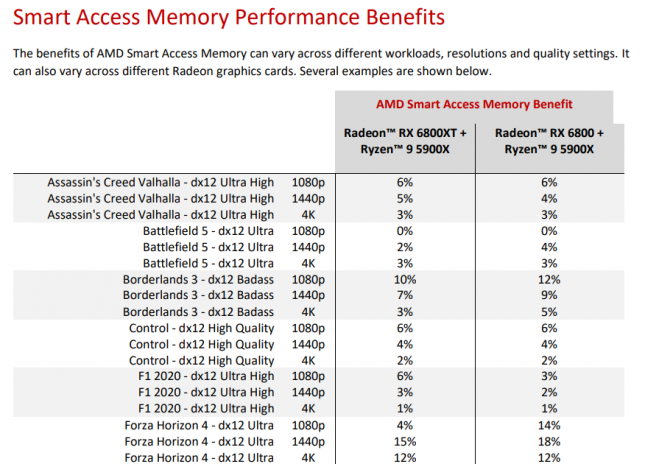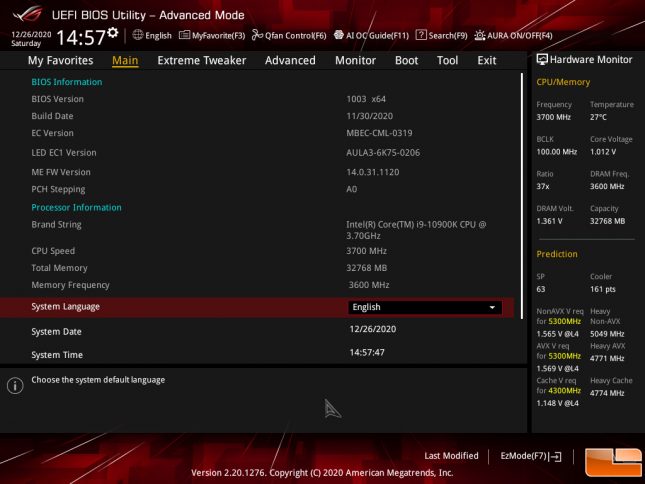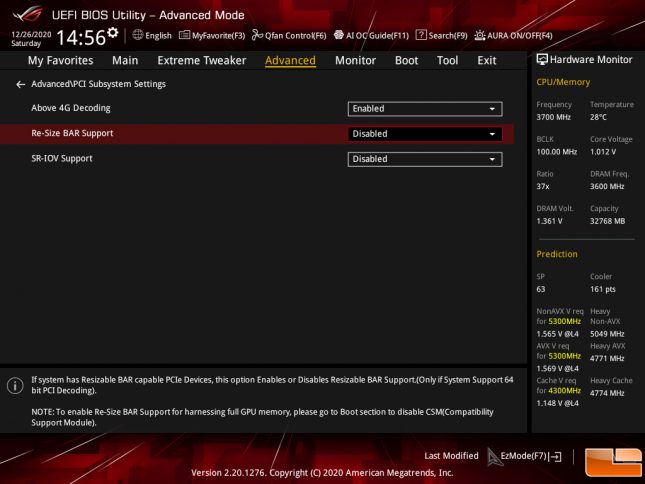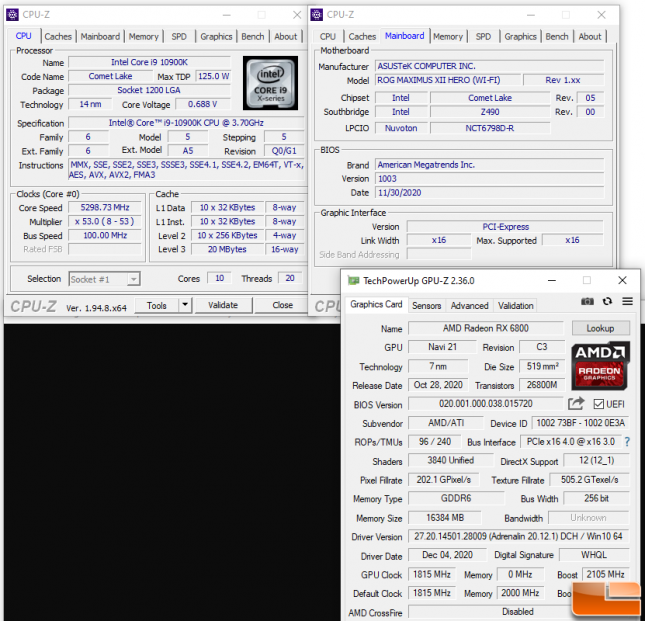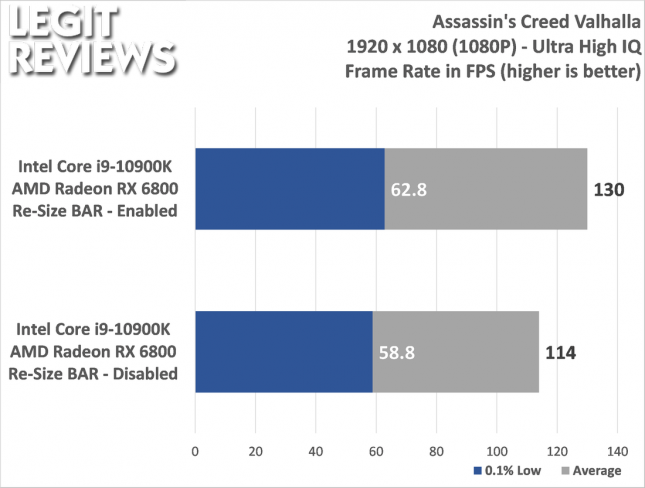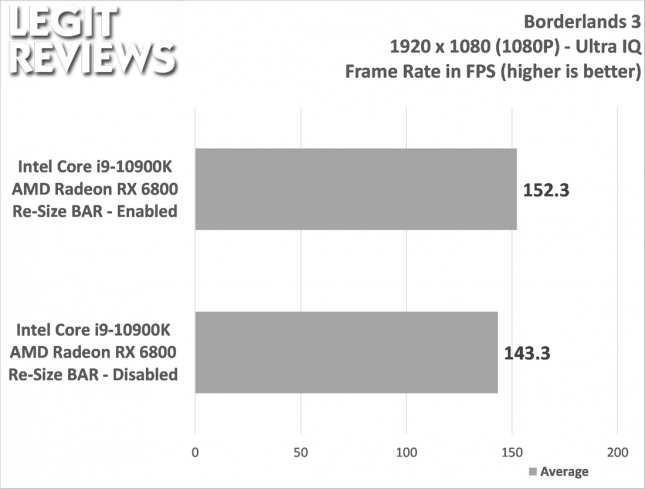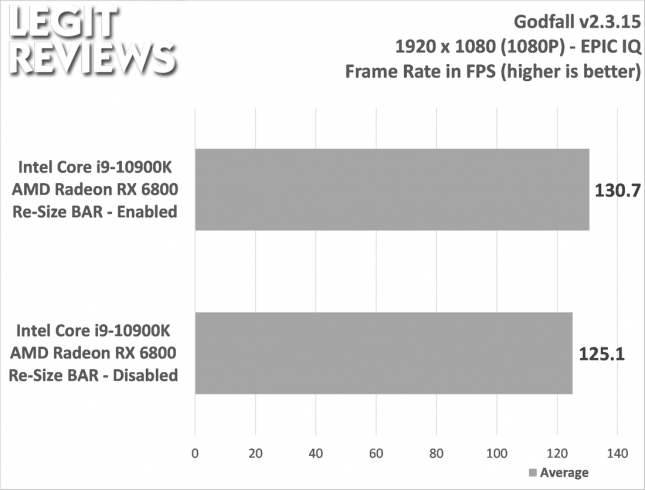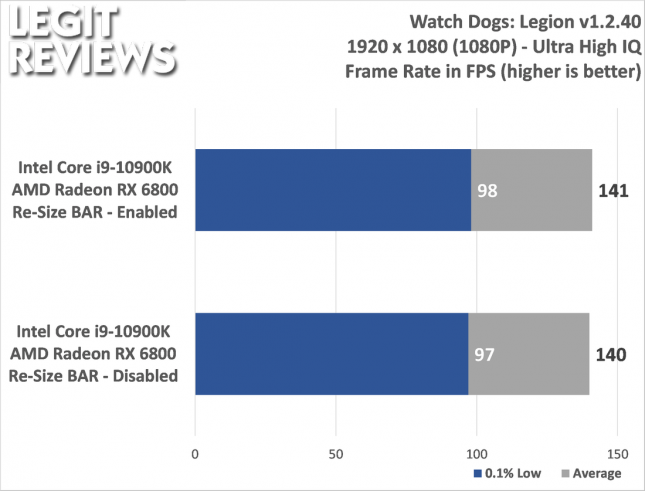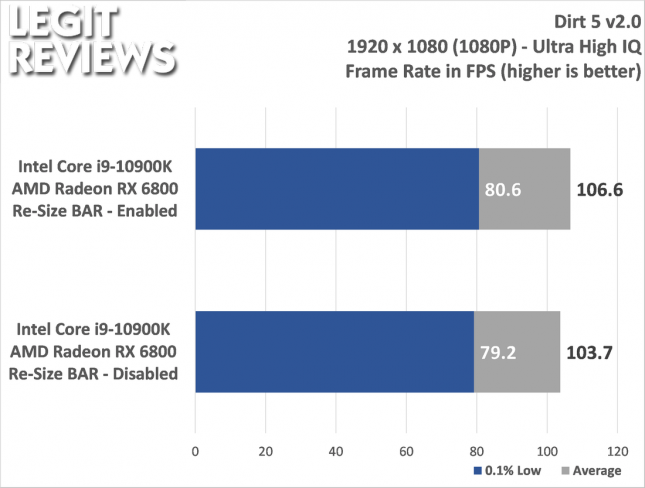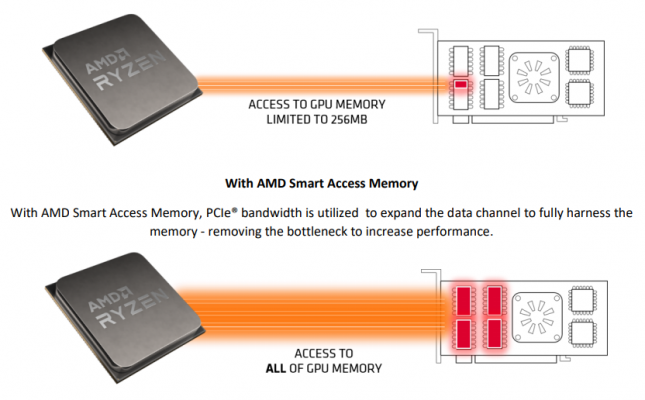Benchmarking AMD Smart Access Memory on Intel’s Z490 Chipset
AMD’s Smart Access Memory Now Works On Intel
Twas the night before Christmas, when ASUS quietly released new BIOS versions for Intel’s 400-series chipset motherboards that added Re-Size BAR support! AMD’s Smart Access Memory (SAM) is based on Resizable BAR (Base Address Register) as that is the secret sauce on how they enhance GPU performance. Enabling this feature allows the CPU access to the full memory buffer for the GPU instead of being limited to just 256MB!
Removing this bottleneck allows for performance uplifts of up to 18% according to AMD’s own internal numbers. It has been a big win for AMD as gamers get a nice performance boost in some game titles running a platform with Ryzen and Radeon together.
Well, now that ASUS has released support for Re-Size BAR in their latest non-beta BIOS you can now enjoy that feature on Intel platforms that are running AMD Radeon graphics cards. The platform that we used for testing was using the Intel Core i9-10900K processor on the ASUS ROG Maximus XII HERO (Wi-Fi) motherboard with BIOS v1003. We then used the AMD Radeon RX 6800 graphics card with Adrenalin 20.12.1 drivers.
Enabling Re-Size BAR in the UEFI BIOS
To enable the equivalent of AMD’s Smart Access Memory you need to enable Re-Size BAR support under the PCI Subsystem Settings menu in the Advanced section of the BIOS. You also need to ensure that Above 4G Decoding is enabled in that same menu and that CSM (Compatibility Support Module) is disabled in the boot section.
Once you have done this you should be able to enjoy SAM on Intel platforms that are running AMD Radeon graphics cards as right now NVIDIA graphics cards don’t support the feature. The good news for NVIDIA users is that they are working on driver support for Re-Size BAR and will introduce said driver in 2021.
The platform that we used for testing was using the Intel Core i9-10900K processor on the ASUS ROG Maximus XII HERO (Wi-Fi) motherboard with BIOS v1003. We then used the AMD Radeon RX 6800 graphics card with Adrenalin 20.12.1 drivers.
Benchmarking Smart Access Memory on Intel
AMD saw good performance gains with SAM on Borderlands 3 and Assassin’s Creed Valhalla with the DirectX 12 API, so we took a look at performance with those two titles. We also ran Godfall, Watch Dogs: Legion, and Dirt 5 that were not tested by AMD with SAM. All five of these games have a built-in benchmark and those were used for our testing. We ran each benchmark five times with and without Re-Size BAR being enabled. AMD saw a 12% increase in performance on Borderlands 3 and a 6% uplift in Assassin’s Creed Valhalla, so let’s see how things fare on Intel in our own tests.
On Assassin’s Creed Valhalla we found a 14% performance improvement in the average frame rate with Re-Size BAR enabled on the Intel test platform. The 0.1% low frame rate saw a 6.8% uplift!
When it comes to performance on Borderlands 3 we noticed a 6.3% performance improvement by enabling Re-Size BAR! We saw very different performance increases on Intel than what was reported by AMD, but they are solid performance gains.
In Godfall with the EPIC image quality preset we noticed a 4.5% performance improvement be enabling the new feature!
Not every game title or resolution is going to show performance gains by enabling this feature. Watch Dogs: Legion was one of those game titles that less than a 1% difference in performance.
Dirt 5 got a major update over the past week with patch 2.00 and we noticed about a 3% performance improvement with Re-Size BAR enabled. All testing was done at 1920 x 1080 with the Ultra High preset!
Final Thoughts and Conclusion
Free performance gains are always good and enabling Resizable BAR appears to do just that on Intel platforms that can take advantage of the feature. Many gamers believe that AMD Smart Access Memory technology is an exclusive feature, but the underlying technology can be enabled on other platforms. In fact, Resizable BAR has been around for a number of years and only AMD figured out how to best utilize the feature. Now that the rest of the industry has caught on, many gamers will be able to soon enable this feature on their gaming PC!

